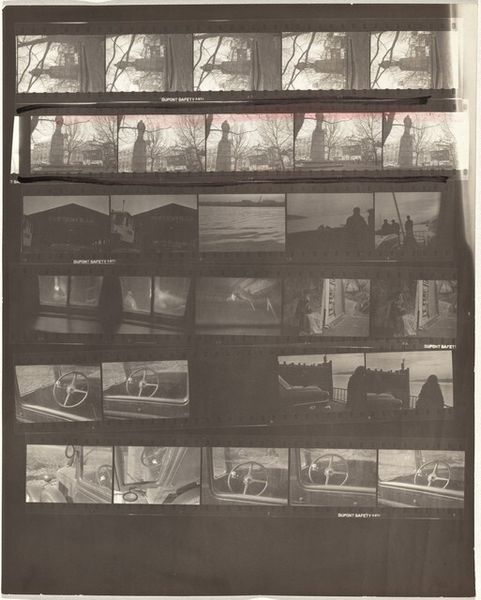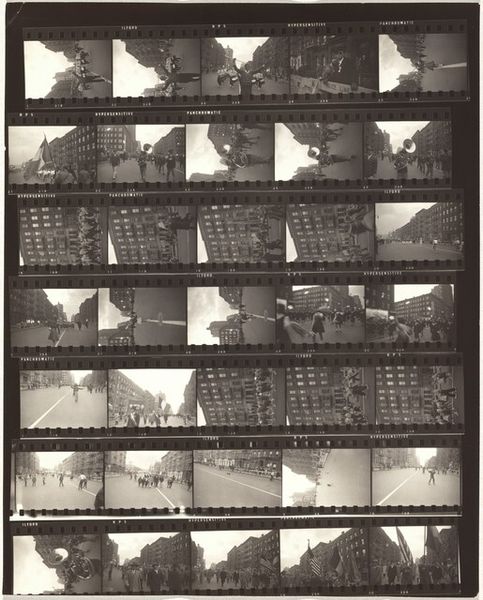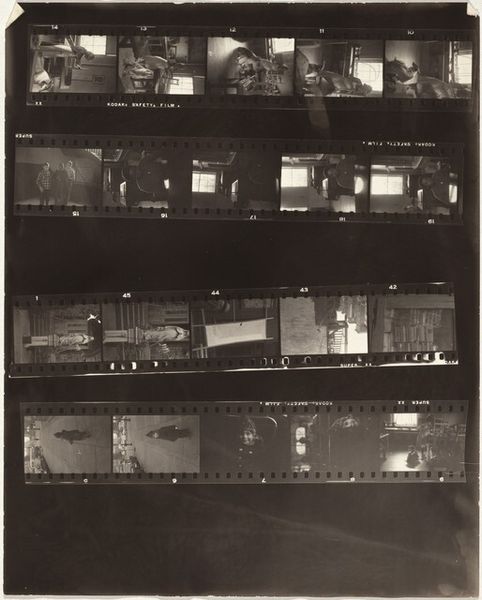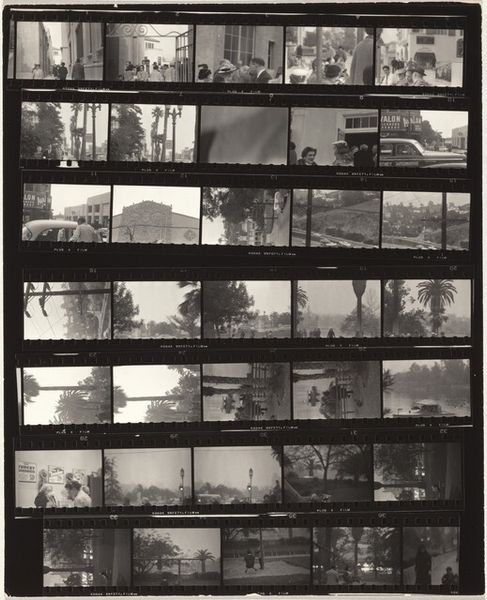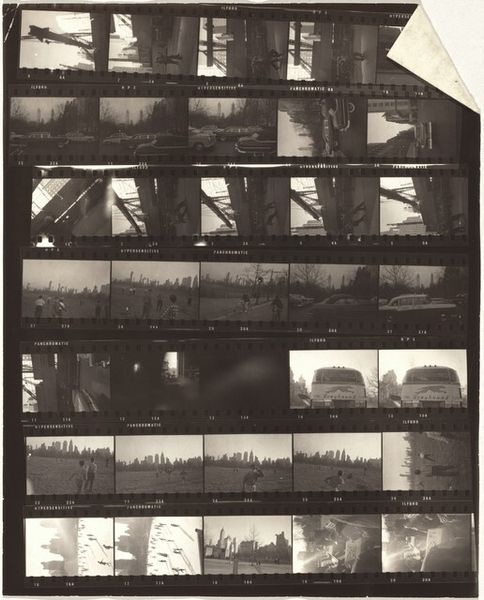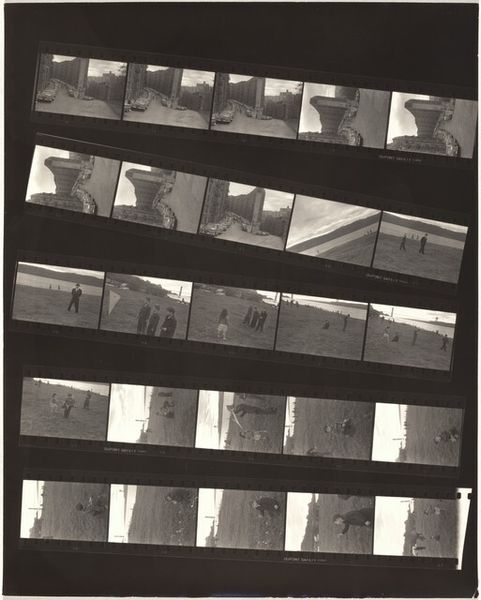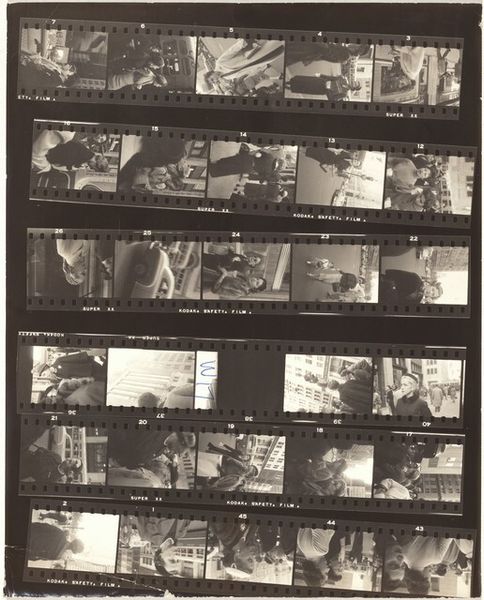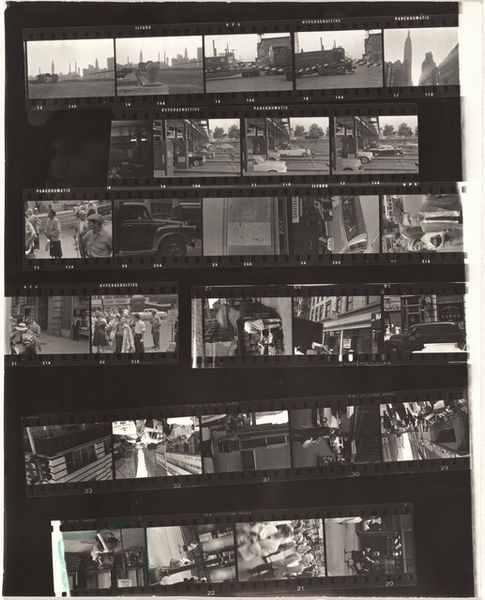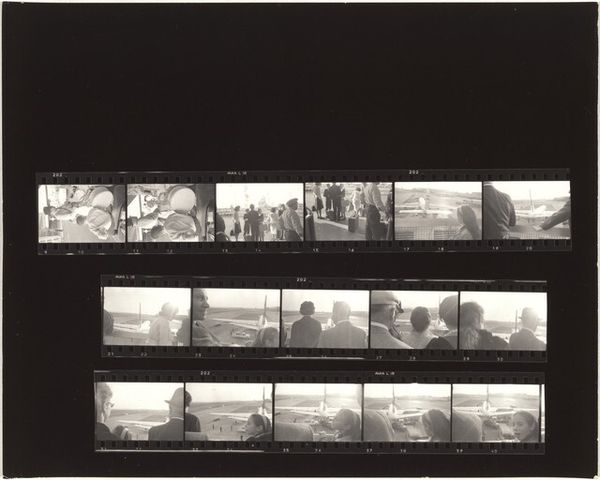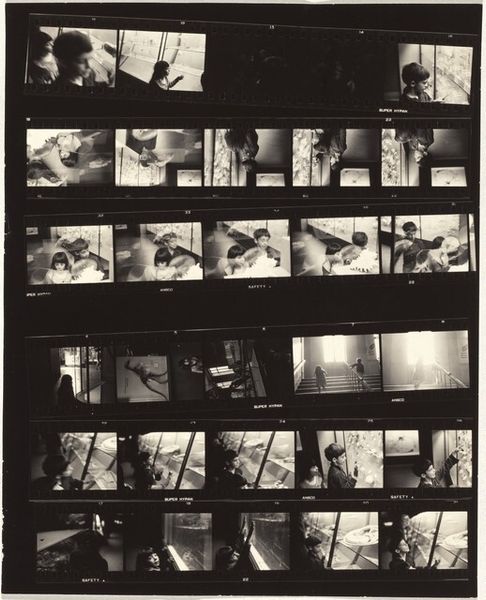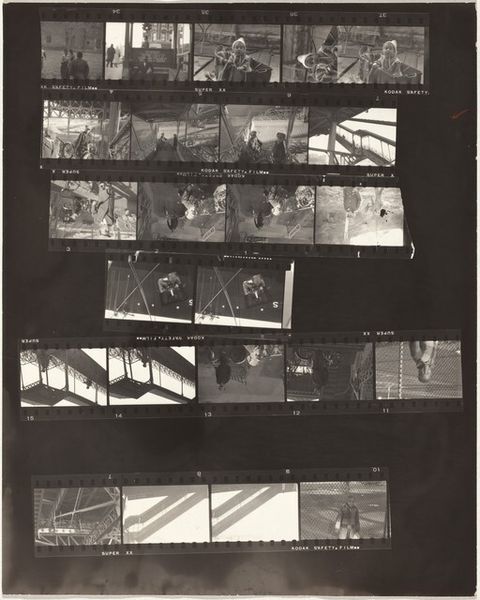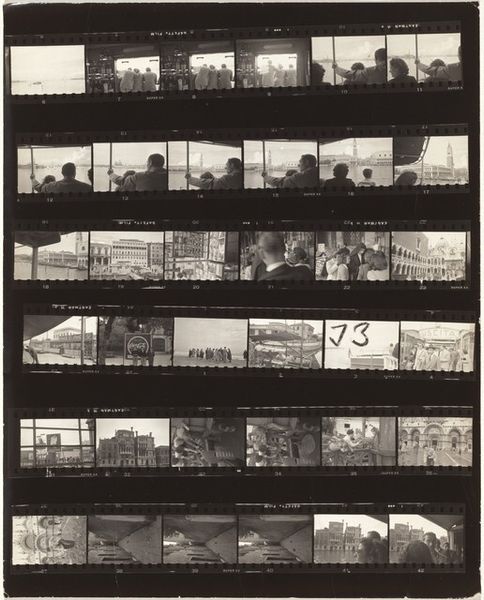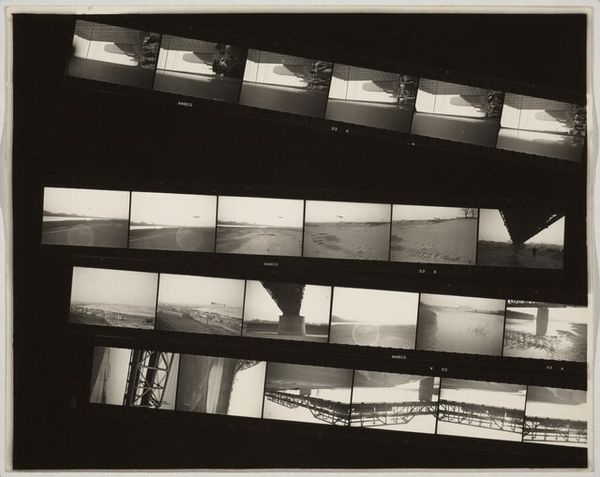
Dimensions: sheet: 35.4 x 27.8 cm (13 15/16 x 10 15/16 in.)
Copyright: National Gallery of Art: CC0 1.0
Editor: Robert Frank’s gelatin silver print, "Peru, no number" from 1948, displays what looks like a collection of photographs within a photograph. The whole thing has a cool, almost melancholic feeling because of the muted tones. There is no central point of focus – images of buildings, landscapes, ships and what appear to be local people vie for your attention. What strikes you most about the work? Curator: Well, what I notice is the layered quality and how it reflects the means of its production. Each individual photograph represents a different interaction, a different moment captured, but Frank layers them. Think of this: Each photo necessitated a relationship to create – film processed, darkroom labor. It’s about image reproduction and social relationships within the culture of photography itself. Editor: So, you are suggesting Frank's choice of using a layered approach emphasizes the mechanics involved and social connections created? Curator: Precisely. Each framed image can be understood as a commodity. They each hold an exchange value that reflects larger societal interactions during post-war reconstruction, perhaps acting as travel adverts, reflecting on commerce through shipping, leisure activities. Does Frank create a visual echo of societal materials available for trade or exchange at this period of time? Editor: I guess I hadn't considered each image within the print in that context. I was too focused on individual moments that compose the picture. Your points make me reconsider the relationships between those separate photographic moments as individual productions with values attached to them. Curator: Exactly, and even Frank himself is working at various social levels through material and labour -- both physical and economic – to create the work we see before us. We get to consider not only what the photograph captures but the circumstances that allowed such an image to be conceived in the first place. Editor: Thinking about the social impact of its construction definitely gives me a broader sense of what the artist intended to communicate. Thanks for sharing!
Comments
No comments
Be the first to comment and join the conversation on the ultimate creative platform.
